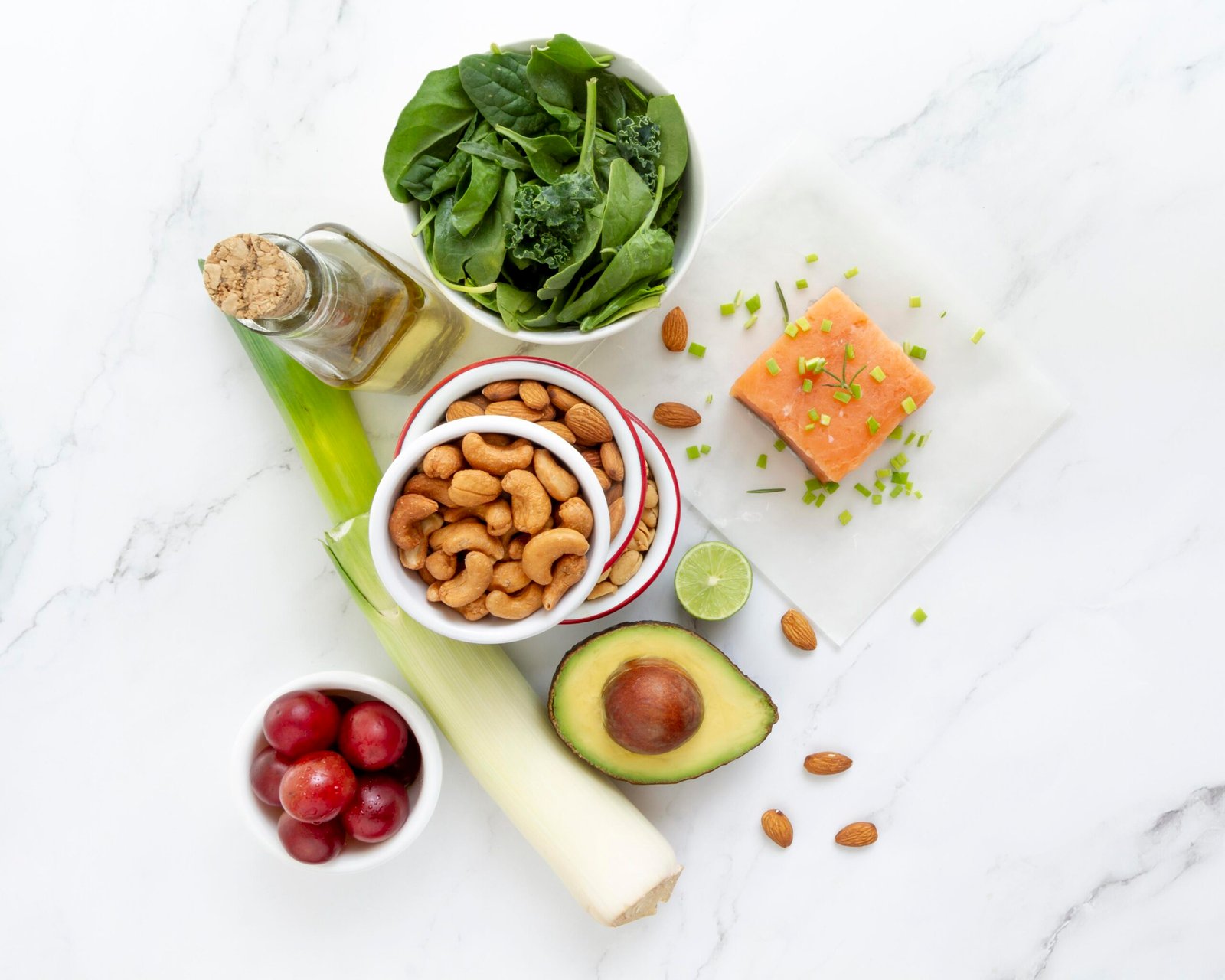Hey friend! Have you ever wondered why you feel sluggish after a meal, or why your tummy isn’t as happy as it should be? I used to struggle with unpredictable gut issues—bloating, low energy, and just feeling out of sync. Then I discovered the power of fiber for gut health, and let me tell you, it was a total game-changer for my digestion and overall well-being.
I get it—fiber can sound intimidating, like some mysterious nutrient you need a degree to understand. But I promise, you don’t need a science background to get started. In fact, you already have everything you need in your kitchen right now!
Curious to find out how adding a few simple foods can transform your gut health? Stick with me, because by the end of this post, you’ll not only know exactly what fiber does for your body, but you’ll also have easy, beginner-friendly steps to make it part of your daily routine. Let’s jump in and set you on the path toward a happier, healthier gut!
Table of Contents
1. Understanding Fiber For Gut health
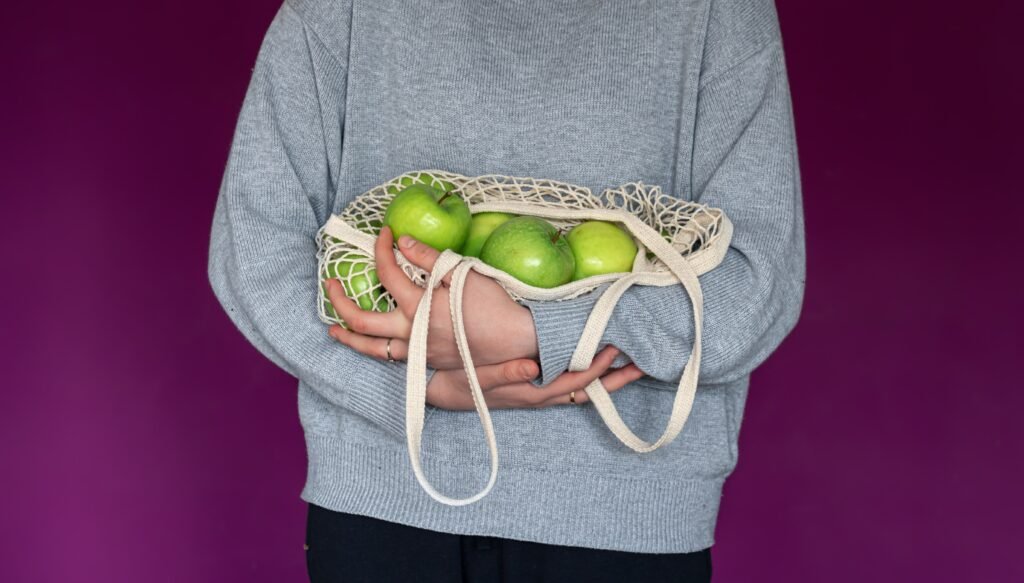
Fiber is the indigestible part of plant foods. Unlike carbs, proteins, and fats, fiber doesn’t get broken down by your enzymes. Instead, it travels through your digestive tract, improving gut motility, feeding beneficial bacteria, and even helping regulate blood sugar and cholesterol levels.
Why beginners should care:
- Gentle support: Fiber acts like a broom, gently sweeping waste out of your system.
- Microbiome boost: Certain fibers feed the friendly microbes in your gut, which helps with immunity, mood, and overall health.
- Feel-full factor: Fiber-rich foods tend to be more filling, which can keep you from overeating and support weight management.
Key beginner-friendly takeaway: Start small, so your gut can adjust without unwanted bloating or gas.
2. The Two Main Types of Fiber: Soluble vs. Insoluble
Soluble Fiber
- What it does: Dissolves in water to form a gel-like substance.
- Benefits: Slows digestion, helps manage blood sugar spikes, and may lower cholesterol.
- Where to find it: Oats, apples, citrus fruits, beans, flax seeds.
Insoluble Fiber
- What it does: Does not dissolve in water and adds bulk to stool.
- Benefits: Promotes regular bowel movements and prevents constipation.
- Where to find it: Wheat bran, vegetables, whole grains, nuts, and seeds.
For a balanced gut, you need both types. Beginner tip: Aim for a mix, like oatmeal with a handful of berries (soluble) and a side of roasted veggies (insoluble).
3. Prebiotic Fiber: Food for Your Gut Friends
Not all fibers are created equal. Prebiotic fibers specifically feed the beneficial bacteria (probiotics) in your gut. These include:
- Inulin: Found in chicory root, garlic, onions, and asparagus.
- Fructooligosaccharides (FOS): Present in bananas, onions, and Jerusalem artichokes.
- Resistant Starch: Found in cooled potatoes, green bananas, and legumes.
Beginner strategy: Incorporate a small garlic/onion base into soups or sautéed dishes—just a clove of garlic goes a long way.
4. Top Beginner-Friendly Fiber-Rich Foods
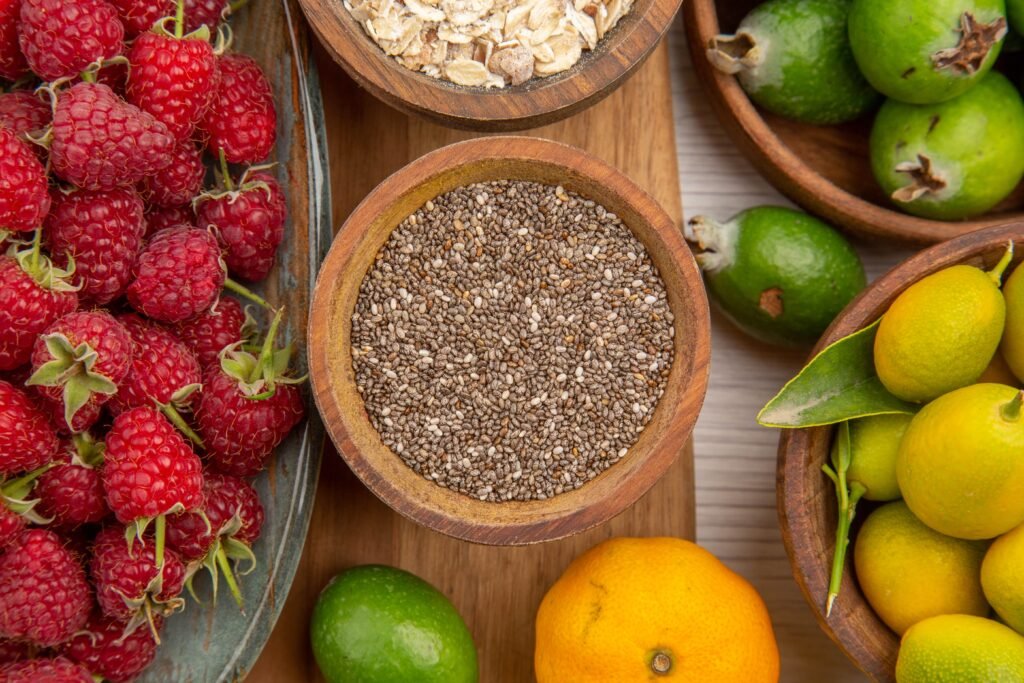
Adding fiber doesn’t have to mean overhauling your entire diet. It can be as simple as swapping out your white toast for whole wheat or sprinkling some seeds on your salad. The key is to choose foods that are easy to find, versatile, and kind to your digestive system. Here are some beginner favorites to get started with:
- Rolled Oats (1 cup cooked = 4g fiber): A warm, comforting breakfast that supports digestion and keeps you full. Top with banana slices or a scoop of peanut butter for a fiber and flavor boost.
- Chia Seeds (2 tbsp = 10g fiber): These tiny powerhouses absorb liquid and expand in your stomach, helping you feel satisfied. Try them in overnight pudding, smoothies, or sprinkled over yogurt.
- Berries (1 cup raspberries = 8g fiber): Naturally sweet and loaded with antioxidants, berries are the perfect snack or addition to oatmeal and cereal. Bonus: They’re high in soluble fiber.
- Lentils (1/2 cup cooked = 8g fiber): These budget-friendly legumes are fiber-rich and protein-packed. Use them in soups, salads, or even veggie burgers.
- Broccoli (1 cup cooked = 5g fiber): A cruciferous veggie that supports gut detox and regularity. Steam, roast, or toss into pasta or stir-fry.
- Almonds (1/4 cup = 4g fiber): Great for on-the-go snacking or adding crunch to meals. They also provide healthy fats to support absorption of nutrients.
- Whole Wheat Bread (1 slice = 2g fiber): Choose brands with whole grains listed as the first ingredient. Even better, go for sprouted or seeded varieties for an extra gut-friendly edge.
- Apples with Skin (1 medium = 4g fiber): A classic snack that travels well. The pectin in apples is a soluble fiber that feeds good gut bacteria.
- Avocados (1/2 avocado = 5g fiber): Creamy and satisfying, avocados offer both soluble and insoluble fiber. Add to toast, salads, or smoothies.
- Carrots (1 cup raw = 3.5g fiber): Crunchy and sweet, they’re perfect for dipping or munching on the go. Great source of insoluble fiber.
Beginner-friendly approach: Keep a daily log of one new fiber food you try. Write down how you felt afterward—energized, bloated, or totally fine. Over time, you’ll figure out what your gut loves most and build a fiber-rich routine that actually feels good.
5. Gradually Increasing Fiber: Avoiding Digestive Discomfort
When you’re just starting out, it’s tempting to go all-in on fiber after hearing about its benefits. But take it from someone who’s been there—too much too fast can leave your stomach in knots. Your gut needs time to adapt to this new influx of nourishment. Rushing the process may result in bloating, gas, cramping, or even constipation if you’re not careful.
Here’s your beginner-friendly strategy for gradually upping your fiber game without the side effects:
- Start with small changes: Instead of going from zero to kale smoothie overnight, begin with a half-cup of oats or a few raw carrots. Aim to increase your fiber intake by just 3–4 grams per week. This slow and steady approach allows your digestive system to adjust smoothly.
- Stay hydrated—always: Think of fiber as a sponge. Without enough water, it can dry things up and cause blockages. Aim for 8–10 cups of water a day, especially when adding more fiber-rich foods.
- Mix soluble and insoluble fibers: A good blend helps avoid discomfort. Soluble fiber (like in oats and apples) soothes the gut, while insoluble fiber (like in whole grains and veggies) keeps things moving. Example: oatmeal topped with banana and chia seeds.
- Chew your food thoroughly: Sounds basic, but it matters. The more you break down your food in your mouth, the easier it is for your stomach to handle it. It’s a simple but powerful step for smoother digestion.
- Listen to your gut: Everyone’s digestive system is different. If you notice extra bloating or sluggishness, ease up and let your body catch up. Pay attention to how you feel and adjust accordingly.
- Track your fiber intake: Use a notebook or a simple app to monitor what you’re eating. This not only keeps you accountable but also helps you identify what fiber sources work best for your gut.
A sudden jump in fiber can lead to gas, bloating, and cramping. Here’s how to ramp up smartly:
- Add 3–4g per week: A half-cup of oats or a handful of almonds can be your weekly increments.
- Stay hydrated: Water helps fiber move through your system.
- Mix fiber types: Combine soluble and insoluble in meals to balance effect.
- Chew thoroughly: Breaking down food well aids digestion.
Listen to your body: If you experience discomfort, dial back and add fluids or lower the amount.
6. 7 Game-Changing Benefits of fiber
Ready to see real results? Here are seven powerhouse benefits you’ll unlock when you make fiber a daily habit:
- Supercharged Digestion: Fiber accelerates waste removal, keeping your digestive system running like clockwork.
- Effortless Regularity: Say goodbye to frustrating constipation—fiber adds the bulk your stool needs for smooth passage.
- Microbiome Mastery: Prebiotic fibers feed your good gut bacteria, boosting immunity and mood.
- Stabilized Blood Sugar: Soluble fiber slows sugar absorption, preventing spikes and crashes that drain your energy.
- Cholesterol Crusher: Certain fibers bind to cholesterol in the gut, helping lower LDL and support heart health.
- Weight-Winning Support: High-fiber foods fill you up faster and for longer, curbing cravings and aiding weight management.
- Inflammation Fighter: Fiber’s fermentation produces short-chain fatty acids, which reduce gut inflammation and strengthen your gut barrier.
Take Action: Challenge yourself to experience one benefit this week—whether it’s smoother digestion or steadier energy. Notice the difference, and let fiber transform how you feel from the inside out.
7. Easy Fiber-Rich Recipes and Snack Ideas
Adding fiber to your meals doesn’t have to be complicated or boring—it can actually be delicious, satisfying, and super simple. Whether you’re on the go, cooking for one, or trying to sneak in more nutrients for your family, these beginner-friendly recipes and snack ideas will make your gut feel great and your taste buds happy.
A. Overnight Chia Pudding
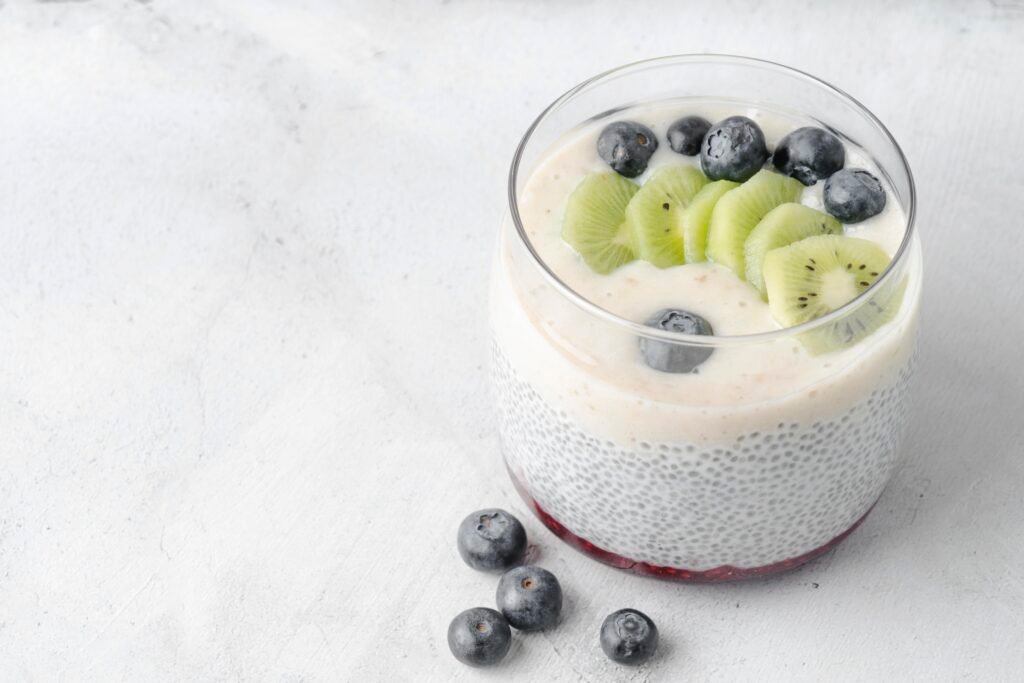
- Ingredients: 3 tbsp chia seeds, 1 cup unsweetened almond milk, 1 tsp honey or maple syrup, 1/2 tsp vanilla extract, 1/2 cup mixed berries.
- Directions: Mix chia seeds with almond milk, sweetener, and vanilla. Refrigerate overnight. Stir and top with berries before serving.
- Fiber boost: Around 10g from chia + 4–5g from berries.
- Pro Tip: Add a sprinkle of flax seeds or shredded coconut for even more fiber and texture.
B. Lentil Veggie Soup
- Ingredients: 1/2 cup red lentils, 2 cups low-sodium vegetable broth, 1 carrot, 1 celery stalk, 1/2 onion, 2 cloves garlic, pinch of cumin and turmeric.
- Directions: Sauté chopped veggies in olive oil, add spices, then stir in lentils and broth. Simmer until soft (about 20–25 mins).
- Fiber boost: 8g from lentils + about 3–5g from veggies.
- Batch Tip: Make a big pot and freeze portions for a quick fiber-rich lunch all week.
C. Apple & Nut Butter Toast
- Ingredients: 1 slice whole wheat or sprouted bread, 1 tbsp almond or peanut butter, 1/2 sliced apple, dash of cinnamon.
- Directions: Toast bread, spread nut butter, top with apple slices and a sprinkle of cinnamon.
- Fiber boost: 2g from bread + 4g from apple + 1–2g from nut butter.
- Snack Hack: Turn this into an open-faced sandwich with extra chia or flax sprinkled on top.
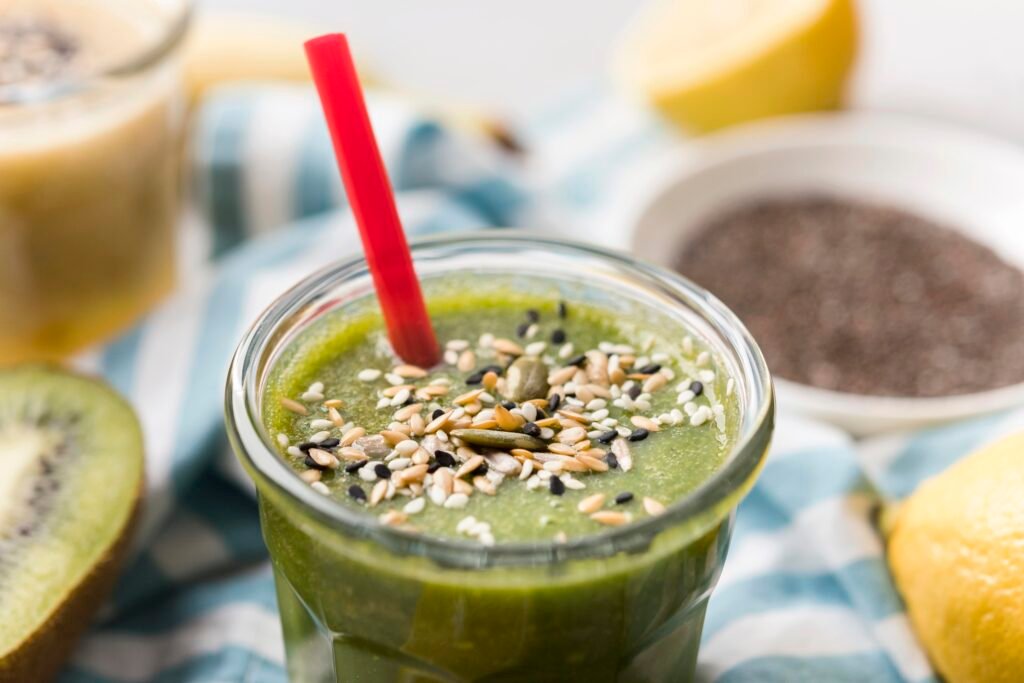
- Ingredients: 1/2 banana, 1/2 avocado, 1 tbsp chia seeds, 1/2 cup spinach, 1/2 cup frozen berries, 1 cup unsweetened almond milk.
- Directions: Blend until smooth.
- Fiber boost: 10–12g depending on ingredients.
- Upgrade Tip: Add oats or ground flaxseed for a breakfast that’ll keep you full for hours.
E. Crunchy Trail Mix Snack Pack
- Ingredients: 1/4 cup almonds, 1 tbsp pumpkin seeds, 1 tbsp sunflower seeds, 2 tbsp dried cranberries or apricots (unsweetened).
- Directions: Mix and portion into snack bags.
- Fiber boost: Around 5–6g per serving.
- Note: Great for meal prep and on-the-go snacking.
Fiber-friendly cooking doesn’t require fancy ingredients or hours in the kitchen. Choose one or two recipes to try this week and see how your body responds. With these flavorful options, you’ll look forward to every fiber-filled bite!
8. Additional Tips for a Thriving Gut
Optimizing your gut health is more than just eating fiber—it’s about creating a supportive environment where your digestive system can thrive. Here are some practical, gut-loving tips to take your fiber journey to the next level:
1. Rotate Your Fiber Sources
Don’t stick to just oats or lentils every day. Rotating your fiber sources introduces different types of prebiotics and nutrients to your gut microbiome, which helps diversify your beneficial bacteria. Think: chia one day, quinoa the next, followed by lentils or sweet potatoes.
2. Incorporate Fermented Foods
Fermented foods like sauerkraut, kimchi, miso, kefir, and plain yogurt are rich in probiotics—the good bacteria your gut craves. When paired with fiber (prebiotics), they form a symbiotic relationship that can supercharge your digestion and improve gut health.
Beginner Tip: Add a tablespoon of sauerkraut to your salad or enjoy a cup of kefir as an afternoon snack.
3. Limit Processed Sugars and Refined Carbs
Too much sugar can feed harmful bacteria and yeast in your gut, disrupting your microbiome balance. Replace sugary snacks with naturally sweet fiber-rich foods like berries or apples with nut butter.
4. Move Your Body Daily
Even light exercise like walking, stretching, or yoga can help stimulate bowel movements and support microbial diversity. Bonus: movement also reduces stress, which is a major contributor to gut imbalances.
5. Practice Stress-Relief Rituals
Your gut and brain are deeply connected through the gut-brain axis. Chronic stress can alter gut bacteria and slow digestion. Incorporate short, daily rituals like deep breathing, journaling, or guided meditations.
6. Eat Mindfully and Chew Slowly
Chewing breaks down food for easier digestion, and mindful eating helps your body properly register fullness and hunger. This can reduce overeating and improve nutrient absorption.
7. Stay Consistent
Gut health isn’t built in a day. The key is consistency. Try to get some form of fiber at every meal—even a sprinkle of seeds or a handful of leafy greens makes a difference over time.
Try adding one of these habits each week. Over time, these micro-shifts add up to major changes in how you feel, digest, and even think. Your gut will thank you!
Conclusion
Starting your fiber journey doesn’t have to be daunting. By understanding the types of fiber, choosing beginner-friendly sources, and increasing intake gradually, you’ll build a solid foundation for gut health. Remember, a happy gut means better digestion, improved mood, and stronger immunity.
Pick one new fiber food this week, track how you feel, and celebrate every small victory along the way. Here’s to your gut’s new best friend: fiber!
Your Turn
What fiber-rich food will you try first? Share your experience and questions in the comments below!
Frequently Asked Questions (FAQ)
Q1: What is the best type of fiber for gut health?
A: A combination of soluble and insoluble fiber is ideal. Soluble fibers (like oats, apples, and chia seeds) form a gel in the gut and feed beneficial bacteria, while insoluble fibers (like whole grains, vegetables, and nuts) add bulk to stool and promote regularity.
Q2: How much fiber should I consume daily for gut health?
A: Adults generally need 25–30 grams of fiber per day. Start with 10–15 grams and gradually increase by 3–4 grams per week to avoid digestive discomfort.
Q3: Can fiber help with bloating and gas?
A: Yes, but balance is key. Soluble fiber soothes the gut lining, while insoluble fiber keeps things moving. Increase intake slowly and stay hydrated to minimize bloating and gas.
Q4: Which foods are highest in prebiotic fiber?
A: Prebiotic powerhouses include garlic, onions, asparagus, bananas (slightly green), chicory root, and Jerusalem artichokes. These feed the good bacteria in your gut.
Q5: Are fiber supplements as effective as whole foods?
A: Whole foods provide a mix of nutrients, phytochemicals, and varied fiber types that supplements can’t fully replicate. Use supplements (like psyllium husk) only if you struggle to meet your fiber needs through diet alone.
Q6: How can I increase fiber without feeling bloated?
A: Focus on hydration, chew food thoroughly, and incorporate both soluble and insoluble fibers. Spread fiber intake evenly across meals rather than in one sitting.
Q7: Does fiber affect weight loss or metabolism?
A: Yes! Fiber-rich foods increase satiety, reduce calorie intake, and help regulate blood sugar—supporting healthy weight management and metabolic function.
Q8: Can I get enough fiber on a vegetarian or vegan diet?
A: Absolutely. Plant-based diets naturally include high-fiber foods like legumes, whole grains, fruits, vegetables, nuts, and seeds. Aim for variety to hit your daily fiber target.
Q9: How does fiber support immune health?
A: Fiber feeds gut microbes that produce short-chain fatty acids (SCFAs). SCFAs help maintain the gut barrier and regulate immune responses, reducing inflammation and infection risk.
